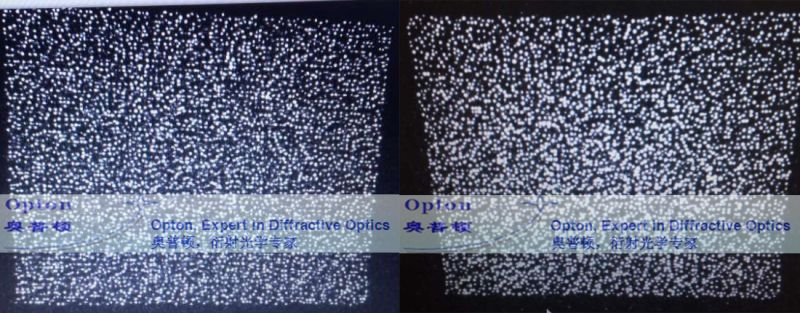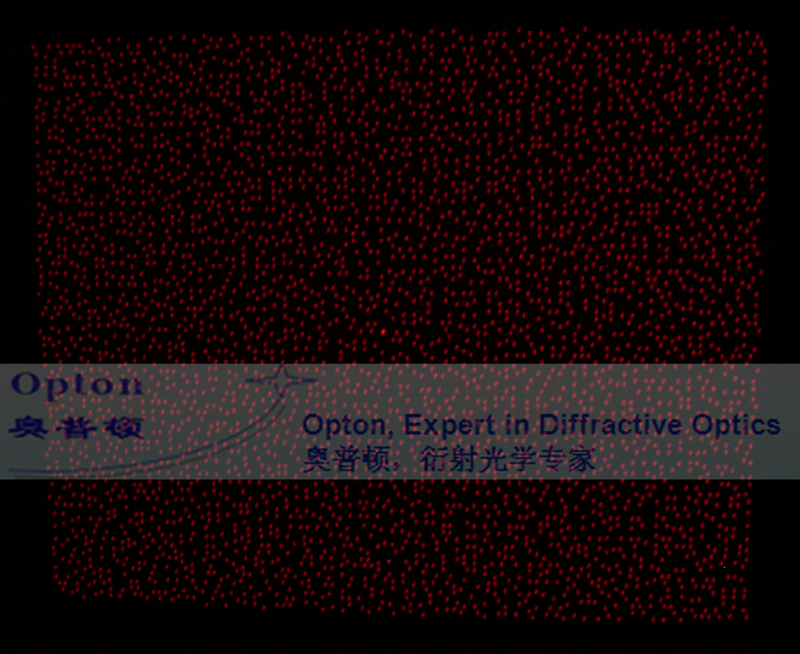
¡¡
Structured light with extremely low zero-order diffraction
Structured lighting sensors see, track, recognize, map and model objects in a three-dimensional way. The principle of these sensors is to project a known structured light pattern on to a scene. Specific applications include tracking a moving object, motion sensing, gesture recognition, 3D sensing and mapping, etc. Famous examples include the Radiohead's breakthrough cameraless music video "House of Cards" and Microsoft's Kinect system.
For Infrared laser based human body motion sensing and gesture recognition systems, diffractive optical elements (DOEs) are perhaps one of the best solutions. This is because DOEs can convert a laser beam to virtually arbitrary intensity distribution (typically structured light) that matches the requirements of customers very well. In addition to human body motion sensing and gesture recognition systems, it can be actually used for tracking the movement of many other things. They are also used for 3D mapping, shape measurements, machine vision, computer vision and vision for smart mobile devices. The following pictures show a customer's desired structured light pattern and the actual pattern generated by our designed and fabricated DOE. It can be seen that the two patterns are in excellent agreement with each other.
These 3D structured lighting sensors are usually robust, low-cost and lightweight. However, the eye-safety issues caused by the zero-order diffraction, which is also referred to as the hot spot, can be a primary concern for the structured-light based sensors. If the zero-order diffraction is too high, the sensor may not meet eye safety requirements.
On August 26 2015, Wuxi OptonTech Ltd is proud to develop new diffractive optical elements (DOEs) which can produce structured light with an extremely low zero-order. Below, the left picture shows the structured light generated by a DOE fabricated by Wuxi OptonTech Ltd, while the right picture shows the structured light generated by a DOE we bought from market. The light wavelength used was 830 nm. We can see that the unwanted zero-order diffraction light is at such a low level that it's invisible. Moreover, our DOE has a lower roll-off (smaller brightness difference between the centre and the edges) compared to the other one.

Eliminating the zero order is a challenging task. The following picture shows the actual 830 nm infrared structured light generated by our designed and fabricated DOE on December 3 2014. It can be seen that the zero order is higher than that made on August 26 2015.
The following picture shows the image of the actual 650/635 nm red structured light produced by our designed and fabricated DOE on March 5 2014.

Standard structured light DOEs by Wuxi OptonTech Ltd£º
| Item No | Spots number of one sub-pattern | Angle of one sub-pattern |
Total spots number of 3x3 sub-patterns |
Total angle of 3x3 sub-patterns |
| SL1 | 3,850 | 17 x 21.7 deg | 34,650 | 51 x 65 deg |
| SL2 | 3,850 | 27.5 x 35 deg | 34,650 | 82.5 x 105 deg |
| SL3 | 11,160 | 20.7 x 26.7 deg | 100,440 | 62 x 80 deg |
| SL4 | 11,160 | 23.2 x 30 deg | 100,440 | 69.8 x 90 deg |
Last edit: July 11, 2016.
Copyright, Wuxi OptonTech Ltd, http://www.edphoton.com